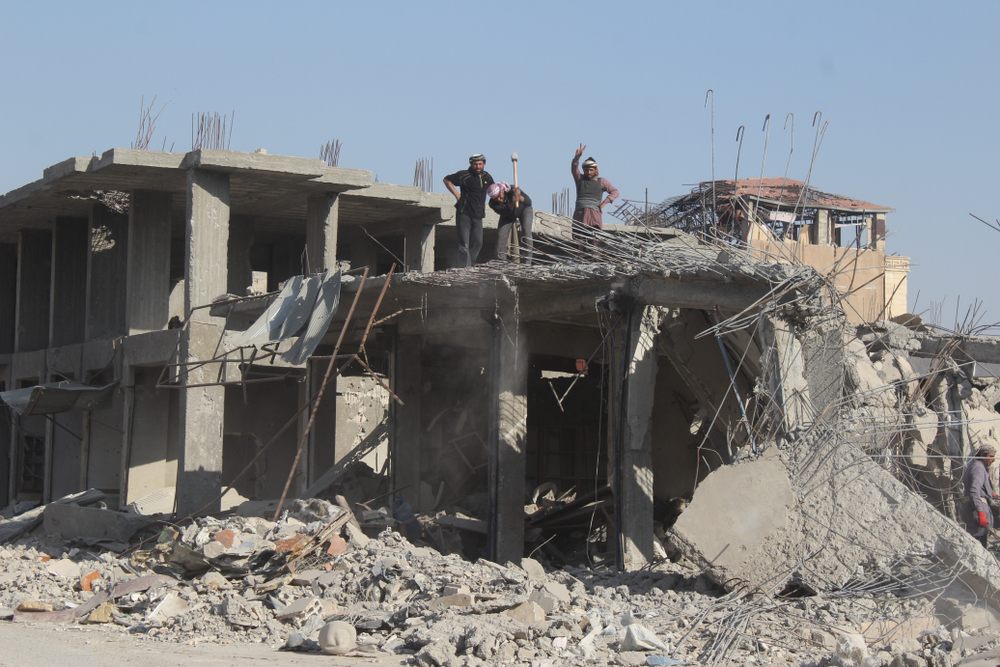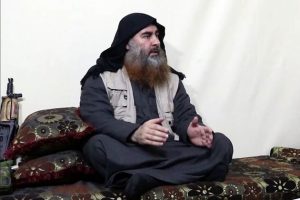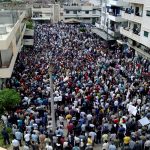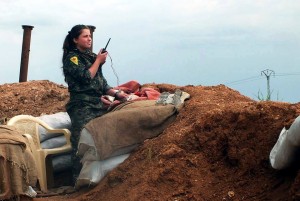by Laila Ujayli
Before the start of the Syrian war, my family used to spend summers in Raqqa, the eastern city that the self-described Islamic State (ISIS or IS) illegitimately claimed as its capital. During those long summer days years ago, my friends and I caught frogs in the sunflower fields on the banks of the Euphrates. When the sun set, we played flashlight tag on the city’s flat rooftops while the adults conversed over cups of amber tea swirling with mint leaves.
Over the past few years, I and others around the world paid close attention to the U.S.-led efforts to liberate Raqqa from IS control. But as the anniversary of the city’s liberation quietly passed Washington by this month, few people seem to be interested in the aftermath of that liberation. The city lies in ruins. People have begun to return to what remains of their homes, clearing roads and re-opening shops. But they do so in the shadow of apocalyptic destruction—miles of skeletal buildings full of the stench of corpses still trapped beneath mammoth slabs of concrete.
Raqqa’s people deserve the same safety and security granted to the rest of the world by the degradation of IS territory. But a year after the city’s liberation, they are still waiting for it. Raqqa’s destruction tells a tragic tale of the fundamental flaws of America’s counter-terrorism strategy if policymakers accept enough responsibility to listen.
The battlefield successes against IS frequently touted by President Trump were partly accomplished by a “War of Annihilation” in Raqqa. To defeat a few thousand militants in dented Toyota pickup trucks, the U.S.-led coalition inflicted some of the worst destruction in decades as part of a U.S. strategy of “precision strikes.” Over 4,000 coalition airstrikes—of which the United States conducted roughly 90 percent—battered the city. A U.S. Marine battalion fired 30,000 rounds of artillery into Raqqa, more than any American artillery unit since Vietnam. This “cataclysmic barrage of firepower” destroyed more than 70% of Raqqa.
The use of “precision” to describe this level of devastation is laughable. A 500-lb guided bomb dropped from the sky doesn’t travel through alleyways and crowded streets in search of a militant. When dropped in an urban area, these bombs destroy the whole building, killing both the militant in the front room and the family hiding in the attic. Raqqa shows there’s truly no such thing as a precision air campaign in urban warfare. Yet the technique continues to be a staple of U.S. counter-terrorism strategy in Iraq, Afghanistan, Yemen, and other conflict theaters around the world.
The U.S.-led coalition has admitted to killing fewer than 100 civilians in the battle for Raqqa, but Airwars estimates that the death toll is at least 1,400. Those human costs are staggering, but the United States justifies them by claiming the noble motivation to defeat IS. No decent person, least of all Raqqa’s people, will deny that IS needed to be defeated. Militants subjected Raqqa’s residents to unspeakable atrocities, from mass abductions and torture to public executions. But to remove the cancer of IS, the U.S. coalition amputated the patient’s limbs, shattered the patient’s bones, and abandoned the patient on the operating table.
And despite it all, the patient isn’t even in remission. The Pentagon denies Trump’s claims of defeating IS. This is no surprise. In a war-torn city steeped in weapons, lacking rule of law, and facing nearly impossible obstacles to the resumption of daily life, it isn’t difficult to imagine desperate people becoming vulnerable to extremist recruitment. All you have to do is snap a photo of Raqqa’s destruction to create a poster for anti-American propaganda.
Still, the counter-terrorism strategy released by the Trump administration earlier this month refuses to address the conditions that drive radicalization in the first place. There are casual references to satisfying “local grievances,” but the report disregards drivers of terrorism like the lack of economic opportunity and effective governance. Instead, the CT strategy focuses on the amorphous notion of combating “ideology,” failing to recognize that dangerous ideologies often take root in unstable conditions where people’s basic rights are denied.
As of now, Trump’s only plan for Raqqa appears to be to exacerbate those unstable conditions. Trump cut $230 million in aid earmarked for Syria’s stabilization, jeopardizing funding for essential projects like demining and the restoration of vital infrastructure. Furthermore, in its persistent non-admission of civilian casualties, the Trump administration is failing to conduct credible investigations into civilian deaths in Raqqa and establish concrete pathways to accountability for victims.
Unless the United States and its coalition partners take responsibility for their actions in Raqqa and offer pathways to accountability for victims, resentment will fester. Syria’s next insurgency could rise from the rubble of Raqqa, and the United States would have no plans on how to address it beyond more death and destruction.
Revamping U.S. strategy, however, can only begin by finally addressing the consequences of earlier mistakes. A year after Raqqa’s “liberation,” the U.S.-led coalition must finally accept responsibility for the civilian casualties and infrastructural damage, throw its full weight behind transparent investigations, and offer reparations to victims. Trump must also release the funds earmarked for Syria’s stabilization to repair what was destroyed by U.S. airstrikes. Raqqa’s people shouldn’t have to wait another year to return safely to their rooftops to drink amber tea.





